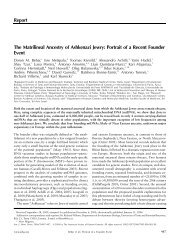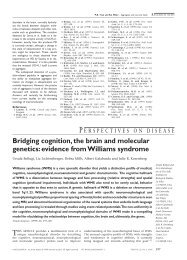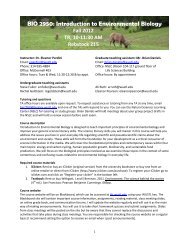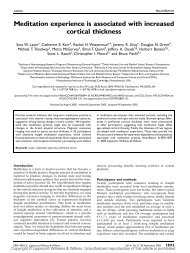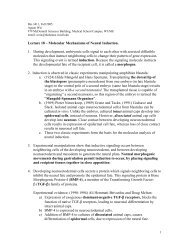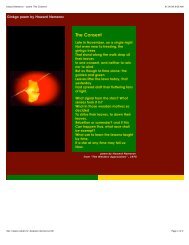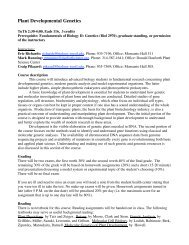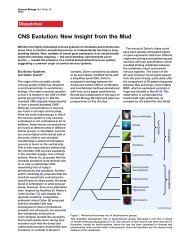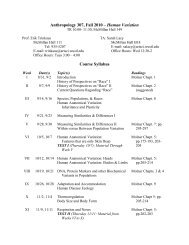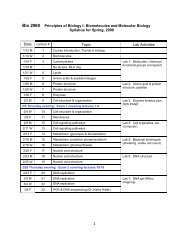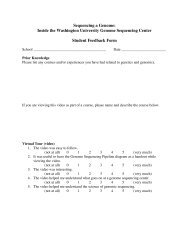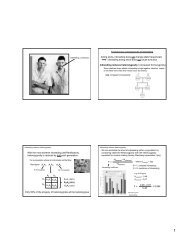BLAST Exercise: Detecting and Interpreting Genetic Homology
BLAST Exercise: Detecting and Interpreting Genetic Homology
BLAST Exercise: Detecting and Interpreting Genetic Homology
You also want an ePaper? Increase the reach of your titles
YUMPU automatically turns print PDFs into web optimized ePapers that Google loves.
<strong>Interpreting</strong> the blastx Output:<br />
Figure 8. Initial list of blastx hits to our sequence<br />
If you emulated our analysis thus far, you should now have strong blastx hits to the Swallow<br />
protein (Figure 8). However, remember that sequence similarity does not necessarily imply that<br />
our sequence contains the D. melanogaster version of the Swallow protein. We need to gather<br />
more evidence before deciding how to annotate our sequence.<br />
First, we need to find out more about the Swallow protein. A good place to start is the Swissprot<br />
database, which is h<strong>and</strong>-curated <strong>and</strong> has links to many other databases. To access the<br />
information for a protein, you need its Swissprot accession string, which is found in the last part<br />
of the GenBank accession number. In this case, we would like to examine the protein<br />
(SWA_DROME) that produces the most significant alignment (5e-148) with our sequence. A<br />
Swissprot accession string consists of an abbreviated gene name, followed by an abbreviation<br />
indicating which organism the particular protein in this entry came from. For example,<br />
SWA_DROME means that the abbreviated gene name is SWA <strong>and</strong> the source of the protein is<br />
DROsophila MElanogaster.<br />
Figure 9. The Expasy web site contains information on the sequences curated in the Swissprot database<br />
8



